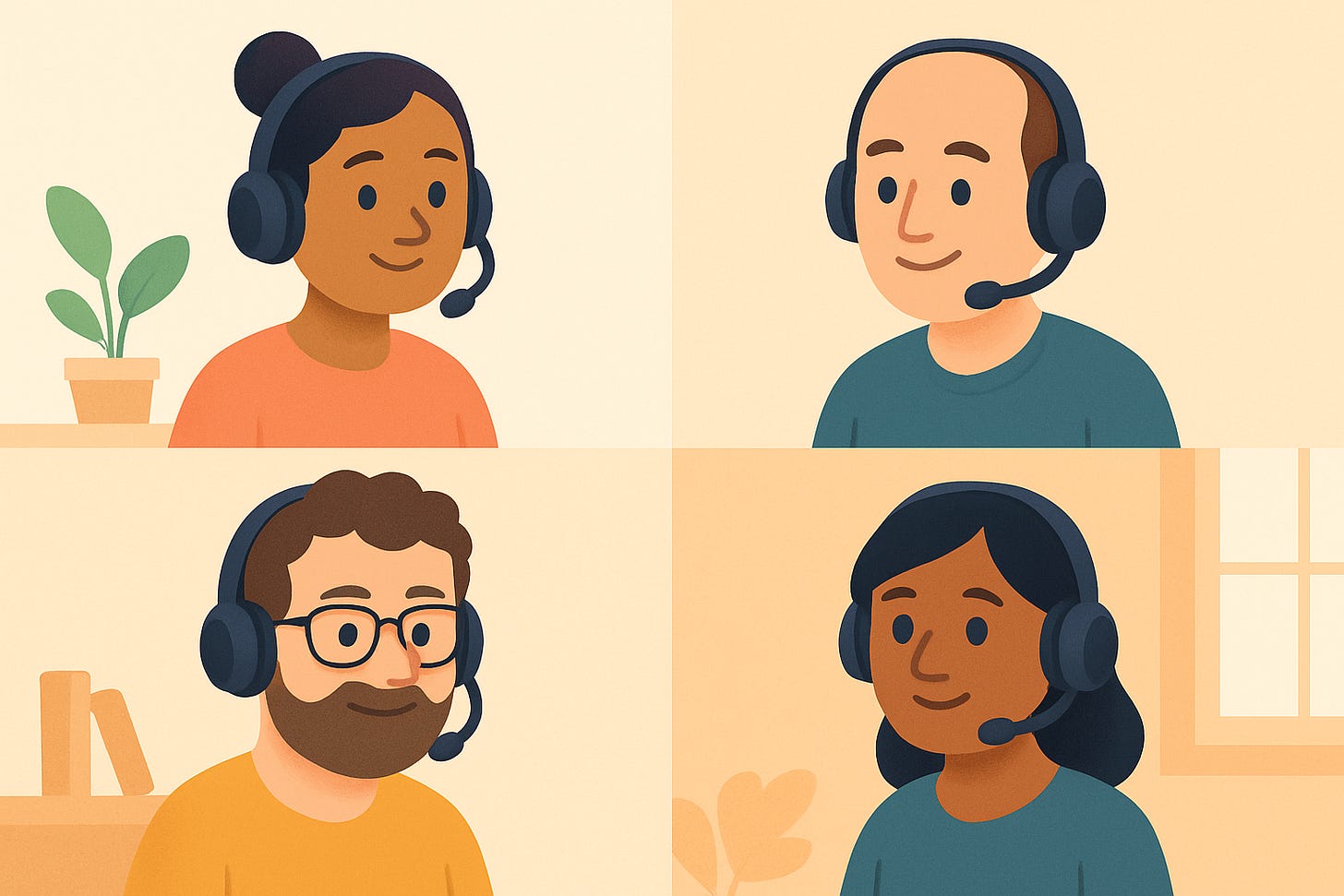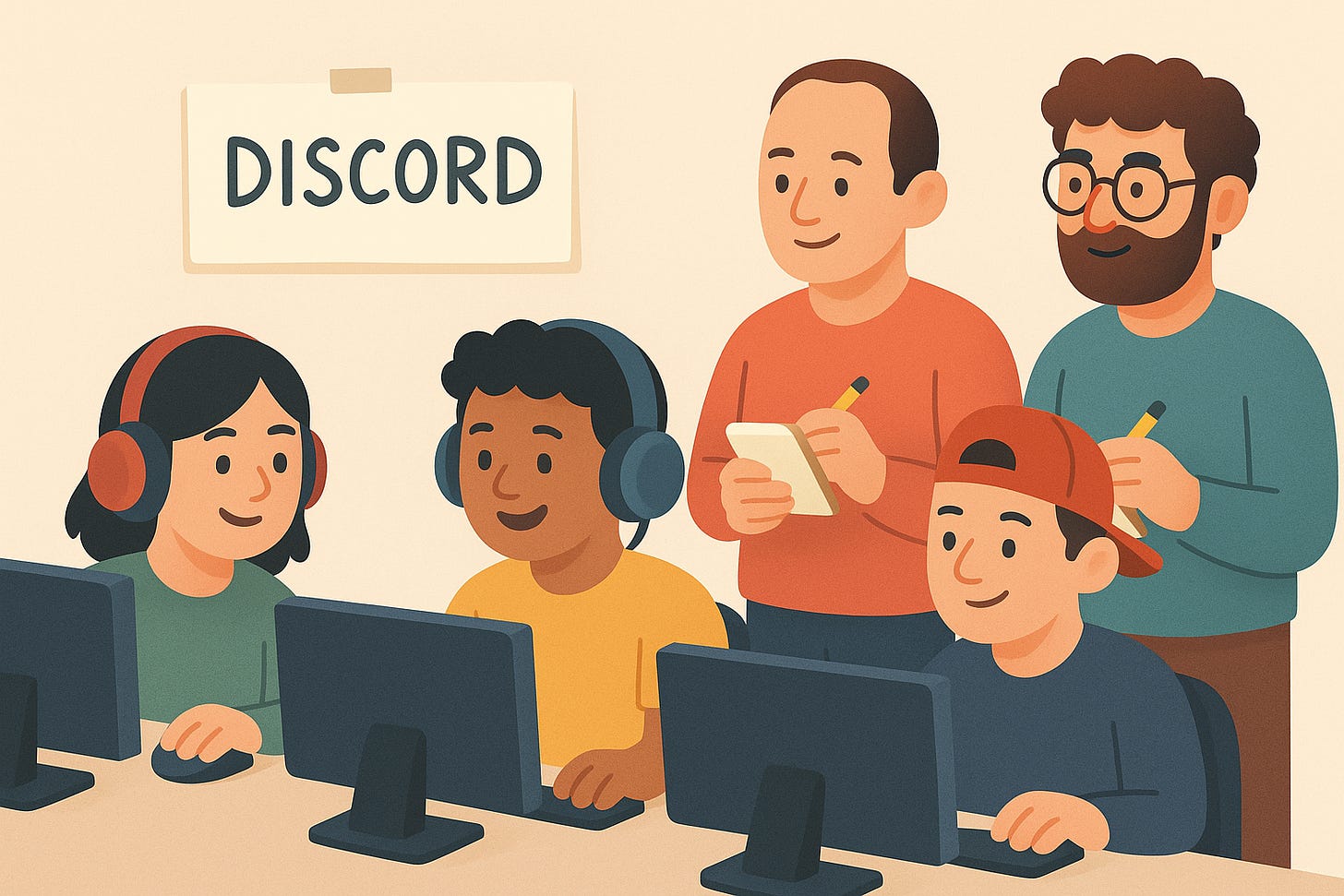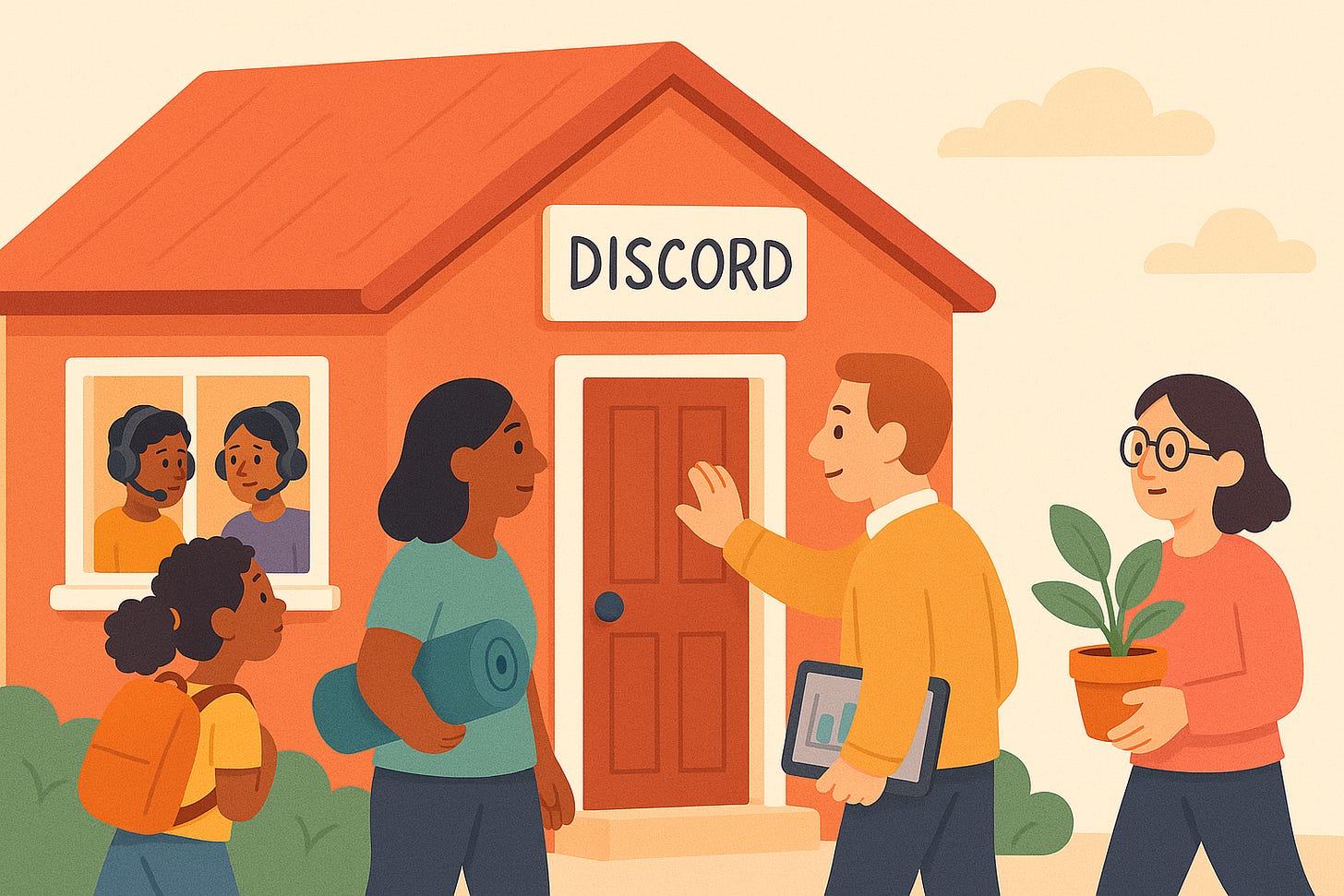Discord’s Community-Led Growth: Lessons in Building More Than Just a Product
How Discord turned a simple solution for gamers into a global platform by putting community at the heart of product growth- and why that strategy is a blueprint for user retention and engagement
How does a group chat app for gamers become one of the world’s most vibrant online platforms? Discord’s journey from niche gamer tool to global community hub is more than a story of product-market fit- it’s a masterclass in building and growing a community around your product.
This is what I found as I dug deep into Discord’s community-building story, with a lens on what actually worked - and what didn’t - when it comes to using community as a growth engine.
Starting Small: Solve a Real Problem for a Real Group
Discord didn’t set out to conquer the world from day one. It began in 2015 as a response to a very real, very specific pain: online multiplayer gamers needed a better way to coordinate and hang out. The available tools - TeamSpeak, Skype - were clunky, not built for persistent communities, and definitely not fun. Discord’s team zeroed in on what mattered to gamers: real-time voice, low latency, and - crucially - zero friction when inviting friends. No downloads, no IP addresses, just a link.
That simple focus let them win the hearts of a small but passionate group. In community-led growth, “small but passionate” beats “everyone” every time.
Go Where Your People Already Gather
Getting those first users was a struggle - until Discord’s founders went to where gamers already hung out: Reddit. Instead of running ads, they posted on active gaming subreddits with an invite link, and then showed up in the servers themselves to welcome newcomers and answer questions. The result? Authenticity, word-of-mouth, and snowball growth.
They also reached out directly to gaming guilds, leveraging connections and, again, being present. The big lesson: don’t ask people to come to you. Go to them, join the conversation, and let your earliest users feel seen and heard.
Community Leaders Are Multipliers
Discord quickly realized that to scale, you don’t just win over individual users - you win the “supernodes.” These are the raid leaders, clan admins, streamers, and content creators who organize communities of their own. Get them on board, and entire networks follow. Discord’s partnership programs and direct outreach to influencers gave them leverage far beyond individual sign-ups.
Empower the Community (and Step Out of the Way)
The best product features? Often the ones your community asks for - or even builds themselves. From day one, Discord paid obsessive attention to user feedback, adding features like screen sharing and video chat because users hacked together their own versions. But they didn’t stop there: Discord opened up its platform with APIs and bot support, allowing communities to create their own tools, games, and moderation systems.
Suddenly, a platform for gamers became a playground for every imaginable interest group, each able to make Discord “theirs.”
Make Community Building Part of Your Brand
Discord invested in programs like HypeSquad, turning die-hard users into ambassadors who brought Discord to local gaming events, dorm rooms, and conventions. The effect was grassroots evangelism at scale. Importantly, this wasn’t top-down marketing - it was equipping fans to do what they already loved, just a little louder and prouder.
Showing up at conventions, hosting their own meetups, and maintaining a visible (but approachable) team blurred the line between company and community. People weren’t just using Discord - they felt part of it.
Listen, Iterate, Repeat
One thing that stood out in the research: Discord’s pace of iteration was set by the community itself. Official forums, user feedback, beta testing, and simply observing how users “hacked” the app all played a part. If something mattered to users, it found its way into the roadmap.
That constant, public loop - ask, listen, build, show - was critical to making users feel valued.
Stay Frictionless: Every Barrier Is a Growth Leak
From the earliest days, Discord obsessed over keeping onboarding as easy as possible. The whole idea was to be frictionless: click a link, pick a username, and you’re in. No setup, no commitment, no lost momentum.
They understood that if joining or inviting friends wasn’t seamless, nobody would bother to try it - especially not mid-game. The takeaway for any community-driven product: make joining and participating as low-effort as possible. Otherwise, people will drop off before they ever become engaged.
Don’t Limit the Community- Let It Evolve
By 2018–2019, Discord noticed a shift: study groups, hobby clubs, classrooms, and fan communities were flocking to the platform. The team saw that people were creatively repurposing Discord’s tools far beyond gaming.
Rather than fight it, they embraced the evolution - rebranding in 2020 from “chat for gamers” to “your place to talk.” They tweaked onboarding, smoothed out non-gamer rough edges, and built features that served broader communities (like server templates and video chat). Importantly, they reassured their original base - gamers weren’t being abandoned; the family was just getting bigger.
And when cultural moments hit - Pokémon Go, Midjourney AI, remote classrooms during COVID - Discord was ready. Their flexible, extensible platform meant communities could make Discord work for them, however they wanted.
Managing Scale: When Community Gets Too Big to Hold in One Hand
Community growth comes with growing pains. Spam, toxic behavior, and even the risk of hate groups exploiting private spaces became real threats. Discord had to double down on trust & safety: building robust moderation tools, beefing up their staff, and taking clear stances on what would (and would not) be allowed. They were not shy about mass-banning accounts and shutting down servers when lines were crossed.
If your platform hosts real communities, you have to protect them - otherwise, everything else falls apart.
Monetization That Feels Like a Community Upgrade
Discord’s only major flop? Trying to be a game store. Users didn’t want it, and Discord killed the idea fast. But their real monetization win was Nitro: a premium tier that offered perks users actually wanted, like better video, custom emojis, and server upgrades.
They went even further with Server Boosts, letting community members collectively chip in to unlock features for their favorite servers. This wasn’t just revenue - it was a way for communities to co-invest in making their home base better.
No paywalls, no disruptive ads, no extractive tactics. Monetization aligned with how users actually valued Discord: not as individuals, but as members of something bigger.
Community as the Moat
Why is Discord so hard to unseat? Once a group builds their home and habits around your platform, switching is almost impossible. Discord’s growth wasn’t fueled by ad spend, but by network effects and deep engagement. For many, Discord isn’t just an app - it’s where their friends, hobbies, and social lives live. That kind of embeddedness can’t be bought or copied; it has to be built, brick by brick, through community.
Lessons Worth Stealing (and Adapting)
Start with a niche and solve a real problem for them.
Find and empower your “supernodes”- community leaders multiply your growth.
Show up where your users are, and let them shape your product.
Lower every barrier to joining and participating.
Let your community innovate - APIs, bots, and customization are superpowers.
Grassroots evangelism beats corporate campaigns.
Stay flexible and ready for unexpected waves.
Prioritize safety and trust as you scale.
Monetize in ways that enhance the community, not extract from it.
Final Thoughts
Discord’s story isn’t just about clever growth hacks - it’s about truly building with your community, not just for them. Every meaningful feature, every leap in growth, and even the stumbles along the way, all came back to the same thing: put the community first.
If you’re thinking about building community into your product, or using community as your growth engine, the Discord playbook has plenty to teach. Their biggest asset was never just the product - it was the people who called it home.
Enjoyed this? Follow “Community as a Feature” for more stories on building communities that power product growth. And if you’re adding social features to your app, check out Replyke.com to save months of dev time.







Yes interesting! The bolt I loved the most is "Find and empower your “supernodes”- community leaders multiply your growth."